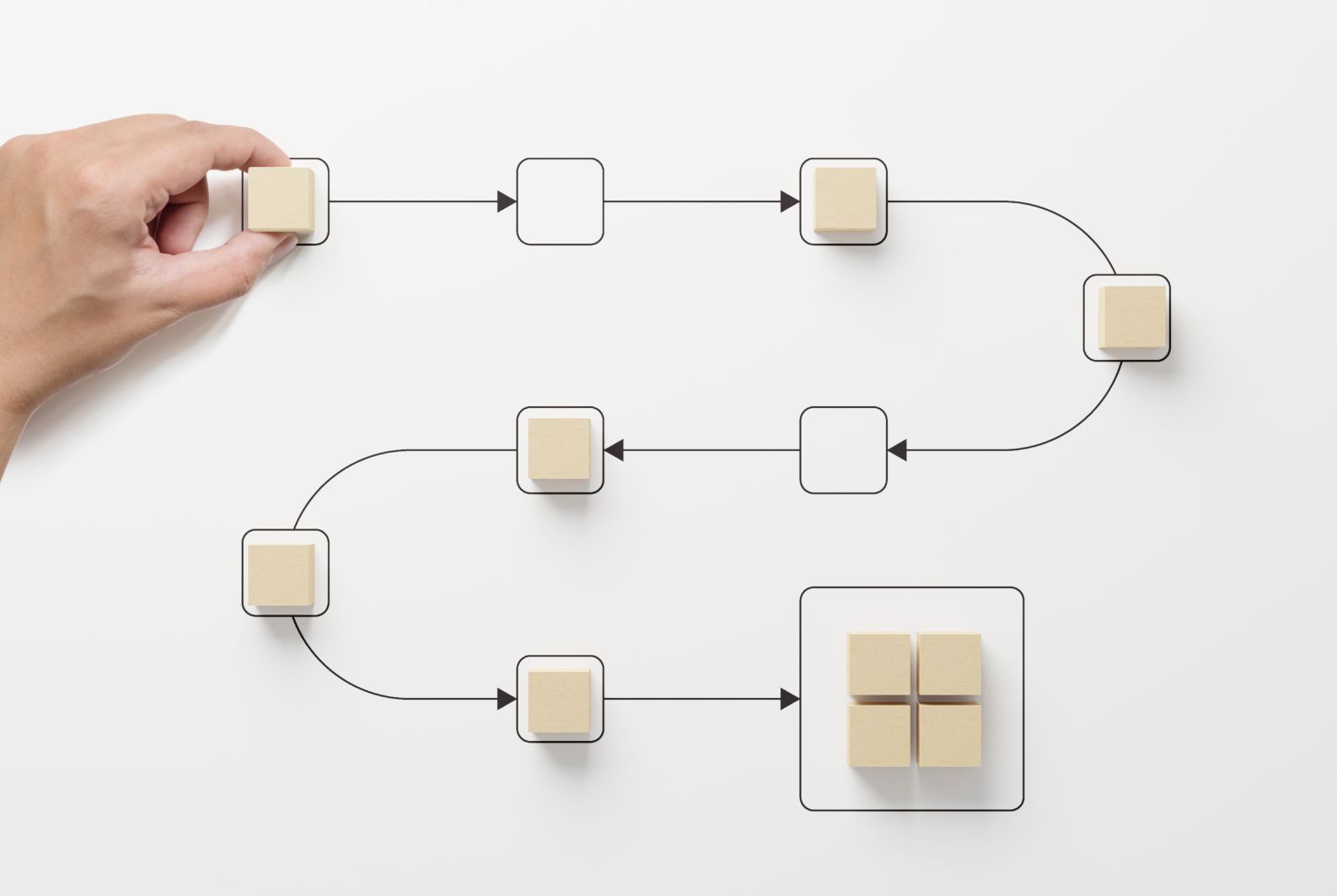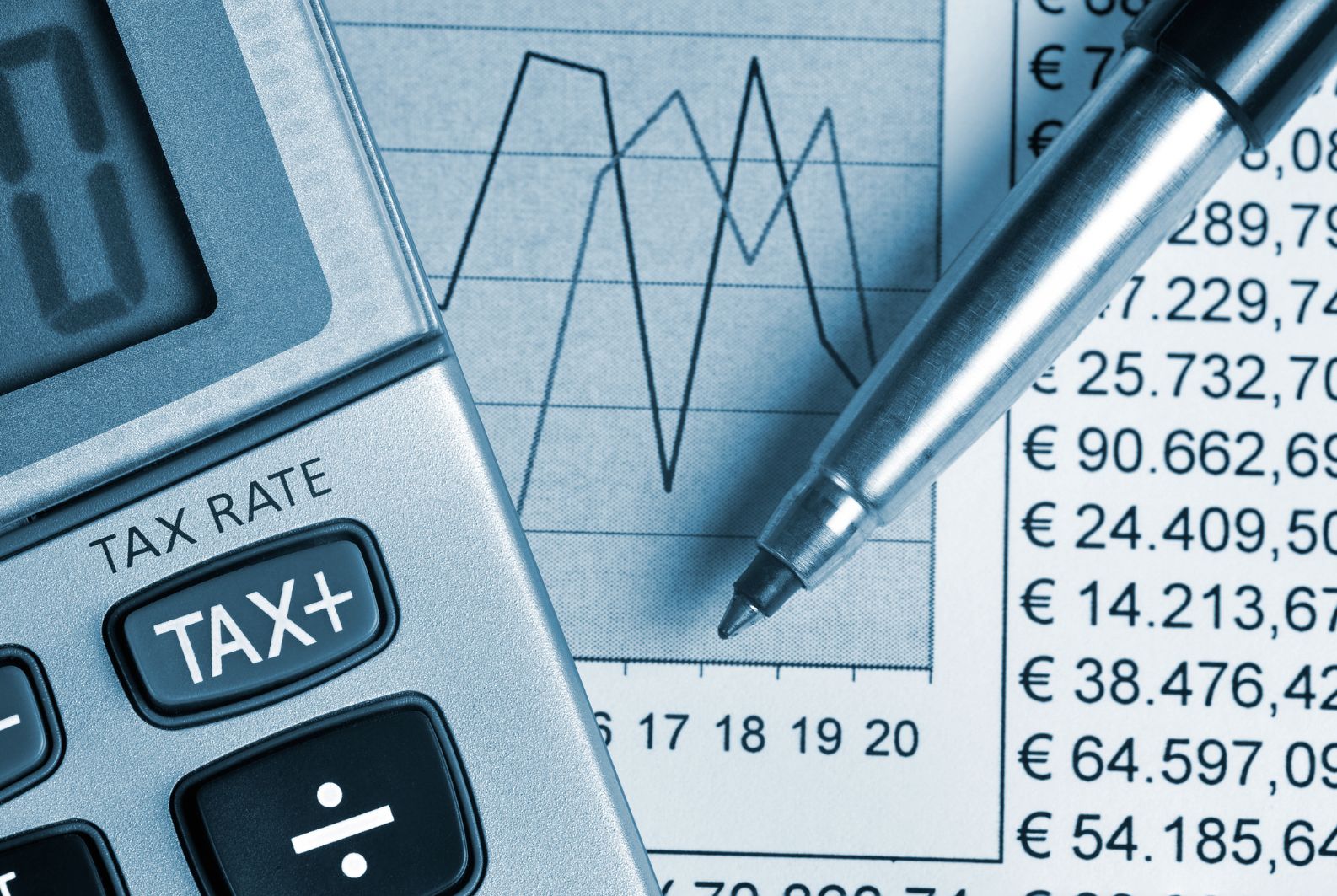Looking for a tax-efficient way to boost your retirement savings while also providing financial flexibility for your business? If so, a Small Self-Administered Scheme (SSAS) might be the great solution! Whether you’re a business owner seeking more control over your pension or an individual looking for flexible retirement planning, a SSAS offers unique benefits that go beyond standard pensions.
In this blog, we’ll walk you through everything you need to know about SSAS pensions—what they are, how they work, their advantages, disadvantages, and why they’re a smart choice for business owners and individuals alike.
What Is a SSAS?
A Small Self-Administered Scheme (SSAS) is a type of workplace pension that’s typically set up by directors of small and medium-sized businesses. Unlike traditional pensions, a SSAS offers much more flexibility, especially for business owners who want to use their pension as part of their business strategy.
SSAS pensions are usually established by limited companies and can have up to 11 members, who are often company directors or key employees. The members act as trustees, giving them full control over the scheme’s investments, which can include everything from shares and bonds to commercial property and even loans to the company itself.
How Does a SSAS Work?
A SSAS is designed to benefit both the business and its members. It allows business owners to pool pension funds, invest in a wide range of assets, and even provide loans back to the company. Here’s how it works:
- Establishment: A SSAS is usually set up by the company for the benefit of its directors and employees. The members act as trustees, giving them direct control over the pension’s investments.
- Contributions: Both the company and individual members can make contributions to the SSAS. Like other pensions, contributions qualify for tax relief, making it a tax-efficient way to save for retirement.
- Investment Control: SSAS trustees have full control over where the pension fund is invested. This can include traditional assets like stocks and bonds, but also more business-oriented investments like commercial property or loans to the sponsoring company.
- Retirement Benefits: Once a member reaches the minimum pension age (currently 55, rising to 57 in 2028), they can start taking benefits from the SSAS. Like other pensions, up to 25% of the pension pot can be taken as a tax-free lump sum, while the remaining balance is drawn as taxable income.
Why SSAS Is great for Business Owners
SSAS pensions offer significant advantages for business owners, making them one of the most flexible and tax-efficient pension schemes available. Here are some of the key reasons why SSAS might be a game-changer for your business:
1. Loan Back to the Business
- One of the most attractive features of a SSAS is the ability to loan money back to the sponsoring company. A SSAS can lend up to 50% of its net assets to the business, providing a valuable source of funding for expansion, cash flow, or other business needs.
- Benefits:
- The business can access funds without the need for external financing, avoiding bank loans and high-interest rates.
- The loan must be secured, and the repayment terms (interest-bearing and within five years) are clear, ensuring a structured and beneficial arrangement for both the business and the pension fund.
2. Investment in Commercial Property
- SSAS pensions allow businesses to invest in commercial property. For business owners, this means that the SSAS can purchase the company’s premises, which the company can then lease back from the SSAS.
- Advantages:
- Rent paid by the company goes into the SSAS, growing the pension fund while being a tax-deductible expense for the business.
- Any capital growth on the commercial property is free from capital gains tax, and rental income is free from income tax, making it a highly tax-efficient investment.
3. Tax Relief on Contributions
- Employer contributions to a SSAS are eligible for corporation tax relief, reducing the business’s overall tax liabilities while building pension savings for directors and key employees.
- Personal tax relief is also available for individuals who contribute to the SSAS, with contributions qualifying for income tax relief.
- The generous contribution limits, with an annual allowance of £60,000 for 2024/25, allow businesses to maximise pension savings while enjoying tax advantages.
4. Pooled Resources for Greater Investment Power
- A SSAS allows multiple members, such as directors, family members, and key employees, to pool their pension resources into one scheme. This creates a larger fund for investment, giving the business more flexibility and opportunities.
- Benefit:
- Pooling assets enables the SSAS to invest in larger projects, such as commercial property or more diversified investment portfolios, that might otherwise be unaffordable for individuals.
5. Business Succession and Inheritance Planning
- SSAS pensions are a valuable tool for succession planning, particularly in family-owned businesses. The SSAS can be passed down to the next generation, ensuring a smooth transfer of wealth and control.
- Benefits:
- Upon the death of a member, the SSAS can be passed on to beneficiaries (often family members) in a tax-efficient manner, without inheritance tax in many cases.
- This makes the SSAS an ideal structure for preserving business assets and ensuring continuity within family-owned or closely held businesses.
6. Control Over Investment Decisions
- Unlike traditional pension schemes, where investment decisions are made by the pension provider, a SSAS gives business owners and trustees full control over the pension fund’s investments.
- Advantages:
- Business owners can actively manage the pension fund, making investment decisions that align with the company’s growth strategy or personal financial goals.
- This control allows the trustees to adapt to changing business needs, market conditions, or investment opportunities as they arise.
7. Flexible Contributions
- SSAS pensions offer flexibility in how and when contributions are made, which is especially useful for businesses with fluctuating income.
- Benefit:
- The company can make larger contributions in profitable years and smaller or no contributions during leaner periods, offering flexibility to manage cash flow while building retirement savings.
8. Diversification of Pension Assets
- SSAS pensions allow trustees to invest in a wide range of asset classes, including stocks, bonds, commercial property, and even private company shares. This provides a more diversified investment portfolio compared to traditional pension schemes.
- Advantages:
- Diversifying the pension fund helps reduce risk and can improve returns over time, as trustees can invest in assets that match their risk tolerance and business strategy.
- Investing in private company shares or other assets closely aligned with the business can provide additional growth opportunities for both the pension fund and the company.
9. No Lifetime Allowance (from April 2024)
- The UK government has abolished the lifetime allowance from April 2024, meaning businesses can contribute more into a SSAS without facing penalties for exceeding pension savings limits.
- Benefit:
- Business owners with larger pension pots can continue growing their SSAS without worrying about additional tax charges, allowing for greater flexibility in retirement planning.
10. Cost-Effective for Directors and Key Employees
- SSAS is often more cost-effective than setting up multiple individual pension schemes for directors or key employees. Since the SSAS is a single scheme for all members, the overall administration and management costs are often lower.
- Benefit:
- This cost efficiency makes SSAS an attractive option for businesses looking to provide a robust pension scheme for directors and top employees without incurring significant administrative costs.
11. Tax-Free Growth on Investments
- Any growth within a SSAS pension fund, such as capital gains from property or profits from investments, is tax-free. This allows the fund to grow more efficiently compared to investments outside of a pension wrapper.
- Advantage:
- The tax-free status of investments within the SSAS means that the fund can grow faster, providing a larger pension pot for members in the future.
12. Personal and Business Wealth Management
- SSAS allows business owners to align their personal wealth with their business’s growth strategy. Contributions made by the business directly benefit the pension savings of key employees and directors, creating a symbiotic relationship between the company’s performance and the growth of the pension fund.
- Benefit:
- This allows for long-term financial planning that integrates both personal and business goals, giving business owners more control over their financial future.
Why SSAS Is Great for Individuals
Even if you’re not a business owner, a SSAS offers a range of benefits for individuals who want more control over their retirement savings. Here’s why SSAS might work for you:
1. Greater Control Over Investments
- One of the main attractions of a SSAS is the control it offers over where and how your pension funds are invested. As a trustee of the scheme, you have the freedom to choose your investments, which could include:
- Stocks and shares
- Bonds
- Unit trusts and investment funds
- Commercial property
- Private company shares
- Cash deposits
- Benefit: This flexibility allows you to align your pension investments with your financial goals and risk tolerance, providing you with direct control over your retirement savings.
2. Tax-Free Growth on Investments
- Like other pension schemes, a SSAS allows for tax-free growth on your investments. This means any capital gains or income generated within the SSAS are free from capital gains tax and income tax.
- Benefit: The tax-free status of your investments helps your pension pot grow faster over time compared to taxable investments outside of a pension scheme.
3. Wide Range of Investment Options
- SSAS offers a broader range of investment opportunities than most traditional pension schemes. You can invest in alternative assets like:
- Commercial property (e.g., office buildings or industrial units)
- Private company shares
- Intellectual property (such as patents)
- Benefit: This wide range of investment options enables you to diversify your pension portfolio and take advantage of opportunities that suit your financial expertise or business interests.
4. Pension Consolidation
- SSAS allows you to consolidate multiple pensions into one scheme, making it easier to manage your retirement savings. If you have pensions from different employers or personal pensions, you can transfer them into your SSAS.
- Benefit: Consolidating pensions provides a clear overview of your retirement savings and reduces the administrative burden of managing multiple pension schemes.
5. Tax-Efficient Contributions
- Contributions made to a SSAS are eligible for income tax relief, just like with other personal pensions. For the 2024/25 tax year, you can contribute up to £60,000 annually, and you’ll receive tax relief on contributions up to this limit.
- Benefit: This allows you to grow your retirement pot more efficiently while benefiting from tax relief on contributions.
6. Investment in Commercial Property
- SSAS allows you to invest in commercial property, which can be particularly attractive if you’re interested in property investment or already have expertise in this area.
- Benefit: Any capital gains on the property and rental income are tax-free within the SSAS. Additionally, this provides an opportunity to diversify your pension portfolio by including real assets like property, which can offer long-term appreciation and income generation.
7. Succession Planning and Inheritance Tax Benefits
- SSAS is a valuable tool for inheritance planning. Upon your death, the assets in your SSAS can be passed on to your nominated beneficiaries, typically free from inheritance tax. Your SSAS can continue to provide benefits for future generations, allowing your wealth to be passed down in a tax-efficient manner.
- Benefit: SSAS offers a way to protect your wealth and ensure it can be inherited by your loved ones without the burden of heavy taxes.
8. Tax-Free Lump Sum
- When you reach the minimum retirement age (currently 55, rising to 57 in 2028), you can withdraw up to 25% of your pension pot as a tax-free lump sum. The remaining 75% can be used to provide an income in retirement, which will be taxed at your marginal rate.
- Benefit: The tax-free lump sum provides financial flexibility and can be used to fund major life events or invest in other opportunities.
9. Pooling Resources with Family Members
- SSAS allows you to pool resources with other members, such as family members, to create a larger pension pot. If multiple family members are part of the SSAS, you can combine funds to make bigger investments, such as purchasing commercial property.
- Benefit: Pooling assets with family members provides access to more significant investment opportunities and allows for a collaborative approach to managing family wealth.
10. Flexible Contributions
- SSAS offers flexibility in how and when you make contributions. You can adjust your contributions depending on your financial situation, making it particularly useful if you have fluctuating income or want to make lump-sum contributions in good financial years.
- Benefit: The ability to vary contributions makes SSAS adaptable to your changing financial circumstances, allowing you to optimise your pension savings over time.
11. Control Over Retirement Income
- With SSAS, you have control over how and when you access your pension during retirement. You can choose to take your pension as a lump sum, regular income, or a combination of both, offering flexibility to meet your retirement needs.
- Benefit: This flexibility allows you to manage your withdrawals in a tax-efficient manner, reducing the risk of being pushed into higher tax brackets unnecessarily.
12. No Lifetime Allowance (from April 2024)
- From April 2024, the UK government has abolished the lifetime allowance, meaning there is no longer a limit on the amount you can accumulate in your SSAS without facing tax penalties.
- Benefit: You can grow your SSAS pension fund without worrying about breaching a lifetime allowance limit, providing more flexibility for long-term pension growth.
Potential Drawbacks of SSAS
While SSAS pensions offer plenty of advantages, they aren’t without their potential downsides. Here are a few things to keep in mind:
1. Complexity and Administrative Burden
- Trustee Responsibilities: As a SSAS trustee, you are responsible for managing the scheme and ensuring it complies with UK pension regulations. This can be time-consuming and requires a good understanding of pension laws and investment management.
- Ongoing Administration: A SSAS requires more administrative effort than traditional pension schemes, including regular reporting to HMRC, maintaining investment records, and ensuring the scheme adheres to pension rules. Failure to comply with regulations can result in penalties.
2. Higher Setup and Running Costs
- Initial Setup Costs: Establishing a SSAS can be more expensive than setting up a standard pension scheme due to the legal and professional advice needed during the setup process. You may need to engage with accountants, lawyers, and pension advisors, which can increase initial costs.
- Ongoing Costs: In addition to setup fees, there are ongoing costs associated with managing a SSAS, such as administration fees, trustee fees, and costs related to compliance and reporting. For smaller pension pots, these costs can erode investment returns.
3. Investment Risk
- Investment Choices and Responsibility: While SSAS provides more control over investments, it also exposes you to more risk. The value of your investments can go down as well as up, and poor investment decisions can lead to significant losses. As a trustee, you bear the responsibility for making sound investment decisions, which may not always align with your risk tolerance or expertise.
- Concentration Risk: Investing in assets such as commercial property or private company shares can be risky, especially if the pension fund becomes overly reliant on a few large investments. For example, if you invest heavily in commercial property and the market declines, your entire pension pot could suffer.
4. Complexity of Loans to the Sponsoring Company
- Loan Repayment Risk: One of the unique features of a SSAS is its ability to loan money to the sponsoring company. However, this comes with risk. If the company experiences financial difficulties and cannot repay the loan, the SSAS could suffer significant losses, potentially jeopardising the retirement savings of the members.
- Strict Loan Conditions: HMRC sets strict conditions for SSAS loans to the sponsoring company, including that the loan must be secured, repaid within five years, and carry a commercial interest rate. Failing to meet these conditions can lead to severe tax penalties for both the business and the pension scheme.
5. Regulatory and Compliance Risks
- Complex Compliance Requirements: SSAS schemes must comply with a range of pension regulations, and failure to do so can result in hefty penalties from HMRC. The trustees are responsible for ensuring the scheme meets all regulatory requirements, which can be difficult to navigate without professional advice.
- Penalties for Non-Compliance: If HMRC finds that the SSAS has breached pension regulations (e.g., by making unauthorised payments or failing to follow loan rules), the scheme could face severe tax penalties, and the trustees could be personally liable.
6. Limited Member Base
- Restricted to 11 Members: A SSAS can have a maximum of 11 members. While this is usually sufficient for small and medium-sized businesses, it can be limiting for larger companies or businesses that want to include a broader range of employees in their pension scheme.
7. Investment Restrictions
- No Residential Property Investment: While SSAS schemes offer a wide range of investment options, they cannot invest in residential property directly. This limits potential investment opportunities in what is often considered a popular and stable asset class.
- No Personal Benefit: Investments made through the SSAS must not provide personal benefit to the members or their families. For example, you cannot use a commercial property owned by the SSAS for personal purposes. Breaching this rule can lead to significant tax penalties.
8. Liquidity Issues
- Illiquid Assets: Many of the investments commonly made by SSAS schemes, such as commercial property or private company shares, are illiquid, meaning they cannot be easily sold or converted into cash. This can be problematic if you need to access pension funds quickly or if the scheme needs to liquidate assets to meet liabilities, such as paying member benefits.
- Limited Cash Flow: If your SSAS is heavily invested in assets like property, which may not generate regular income, it could face cash flow challenges, particularly if the scheme needs to pay out pensions to its members.
9. Potential Conflicts of Interest
- Business and Pension Goals: When a SSAS lends money to the sponsoring company or invests in company assets, there is a risk that the business’s financial needs may conflict with the long-term goals of the pension scheme. Trustees must be careful to balance the interests of the business with the duty to grow and protect members’ pension savings.
10. Long-Term Commitment
- Difficulty in Winding Up: A SSAS is a long-term commitment, and winding up the scheme can be a complex and costly process. If the business closes or if the trustees no longer want to manage the SSAS, unwinding the scheme requires legal and financial advice, and there may be tax implications to consider.
11. Potential for Underperformance
- Lack of Professional Management: While SSAS provides control over investments, not all trustees have the expertise to manage investments effectively. If the trustees lack the knowledge or resources to manage the scheme properly, the pension fund could underperform compared to professionally managed pension schemes.
Is a SSAS Right for You?
A SSAS can be an excellent option for business owners looking for a flexible, tax-efficient way to grow their pension and benefit their company at the same time. The ability to lend money back to the business, invest in commercial property, and enjoy tax-free growth makes SSAS one of the most powerful pension tools available.
For individuals, SSAS pensions offer unparalleled investment control and tax benefits, allowing for a more tailored approach to retirement planning. However, SSAS pensions are not suitable for everyone. They require active management and a good understanding of investment and pension rules.
Ready to Take Control of Your Pension?
At Black & White Accounting, we specialise in helping business owners and individuals make the most of their retirement savings. Whether you’re considering a SSAS for your business or exploring your options for personal pension planning, our team of experts is here to guide you through the process.
Get in touch today to learn how a SSAS can help you secure your financial future while supporting your business growth!



